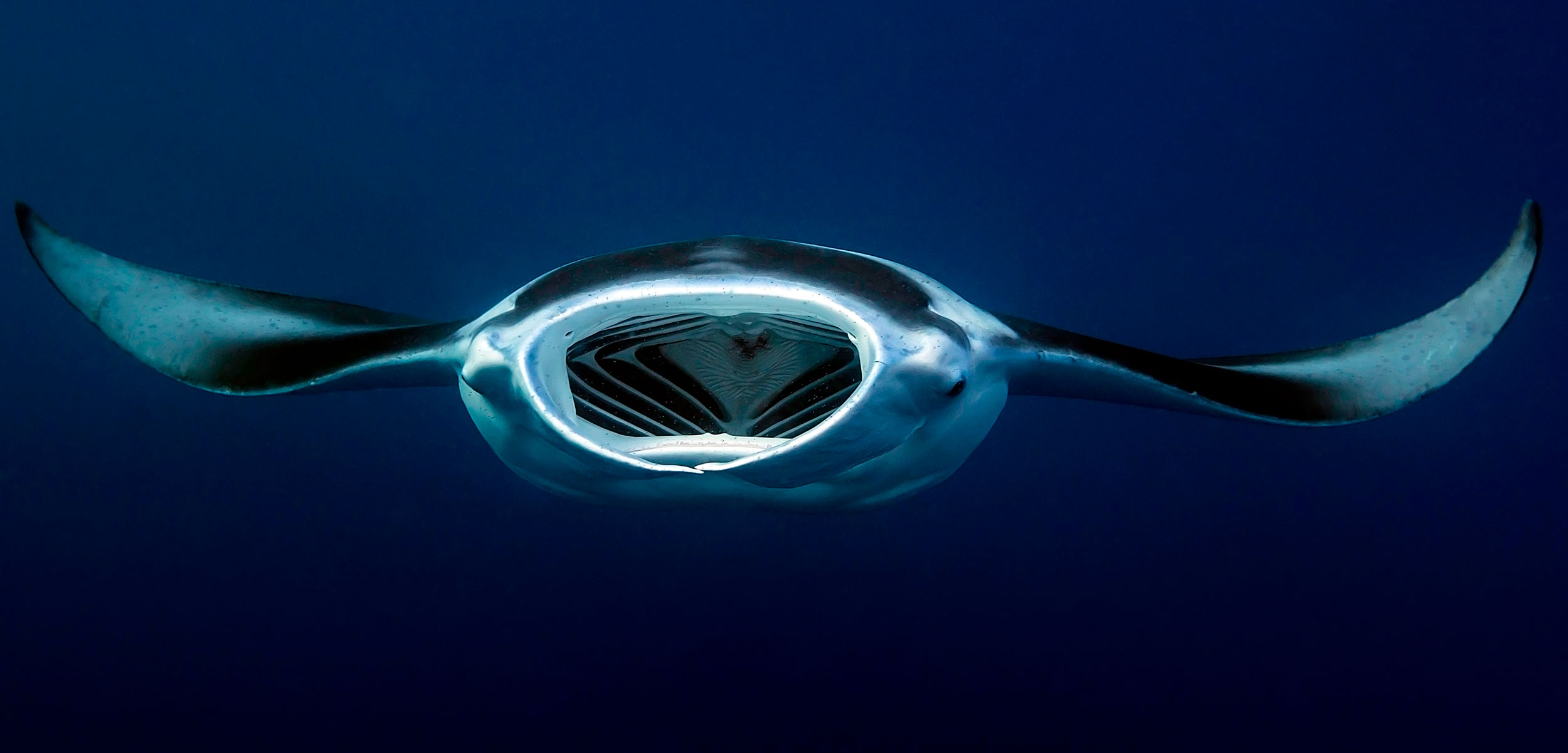Reef Manta Reaches New Record-Breaking Depth
Scientists aren’t sure why reef mantas are taking adventures into the deep.
Article body copy
Until now, the deepest recorded diving reef manta ray ever seen was in the Red Sea, where a team of marine biologists documented a ray 432 meters below the surface in 2011. But a male manta ray in the South Pacific has broken that record by nearly 250 meters, having been recorded diving to 672 meters.
The discovery came because of work by biologists studying the enigmatic creatures at three locations in New Caledonia, a French territory east of Australia. They affixed 11 manta rays with tracking tags that recorded light level, depth, and temperature. The manta rays in this area have never been studied before. “We were eager to find out where mantas might be going in a country where we knew little about them,” says biologist Guy Stevens of the UK-based nonprofit Manta Trust, whose organization collaborated with the project.
All of the manta rays in the study had dives deeper than 300 meters, while only one pushed to the record-breaking depth. These dives were deeper and happened more frequently than expected, says Hugo Lassauce, lead author of the new study.
Lassauce and his team think the rays have a few reasons to be traveling so far beneath the surface. “If the mantas are going deep, it’s because there is something they cannot get in shallow water,” he says. “It’s cold and they use a lot of energy to go there.” Scientists have observed them mating in warm, clear, shallow water, and they don’t think the rays are going for a tryst in the deep.
The rays’ dives follow a U-shape—a pattern that previous studies have shown is associated with feeding—as they travel from the surface down to forage on plankton. “I think it would be plausible to say they were feeding at depth, or they were at least investigating something at depth that was interesting,” says biologist Andrea Marshall, cofounder of Marine Megafauna Foundation, who was not involved in the study.
Marshall and other biologists are not particularly shocked that reef mantas can achieve these depths. Oceanic mantas can travel 1,000 meters beneath the surface, for instance. However, Stevens says the work adds “to what we know the species is physiologically capable of.”
Around the world, reef manta populations are in decline because of human activity, predominantly fishers harvesting their gill rakers for use in traditional Chinese medicine. Understanding where the rays go and why can aid conservation efforts.
“If we find out they are going deeper or farther away from the coast, we need to rethink management measures,” says Lassauce. “They could have previously unknown threats in these new zones.”

